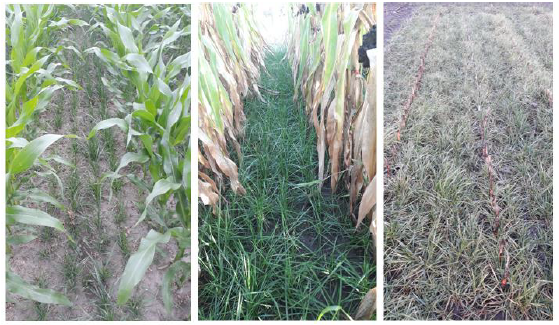The research innovation 'Cover crops to reduce nutrient leaching' was demonstrated on a trial field in Ravels. This was part of the demonstration project 'Functional use of green covers in maize'. Here, different times of under-sowing were compared (equal sowing, 4-5th leaf stage and 8-10th leaf stage), both for silage and grain maize. In some plots, green cover crops were also sown after the harvest of maize. For this trial, yield and nitrate residue were determined.
 Picture from the brochure 'Functionele leidraad: Groenbedekkers bij maïs’
Picture from the brochure 'Functionele leidraad: Groenbedekkers bij maïs’
Green cover crops offer many advantages. They can help to increase the organic matter content of the soil, improve the soil structure, reduce wind and water erosion and soil compaction, suppress pests and diseases, prevent the leaching of nitrogen, etc. The development of the green cover must be sufficient to fully express these positive characteristics.
Sufficient attention should be paid to the under-working of the green cover crops. They should be sufficiently shredded, otherwise a compact acid layer may form. A well-developed green cover should also be worked in good time. If it is worked too late, there is a risk that digestion will remove too much of the nitrogen that is actually needed for the crop.
Another challenge is the seed storage of the green cover crop. To ensure that the green cover does not develop into a weed in the following crop year, sufficient attention needs to be paid to the correct choice of crop, timing of sowing, mowing, tilling and ploughing.
Finally, green cover plants can also be the host of various diseases and pests. This should be taken into account when choosing the green cover.
The cost price and nutritional added value differ for each green cover crop. If you like to feed the green cover crop, it is best to opt for sowing after the (maize) harvest. Taking a cut from grass that has been sown under usually results in a higher (too high) ash content.
However this was not demonstrated on a beef farm, this is definitely interesting for beef farmers to apply, as many benefits come with implementing cover crops.
In the brochure ‘Functionele leidraad: Groenbedekkers bij maïs’ more information can be found on cover crops, benefits and points of attention, and when to sow. (Dutch)